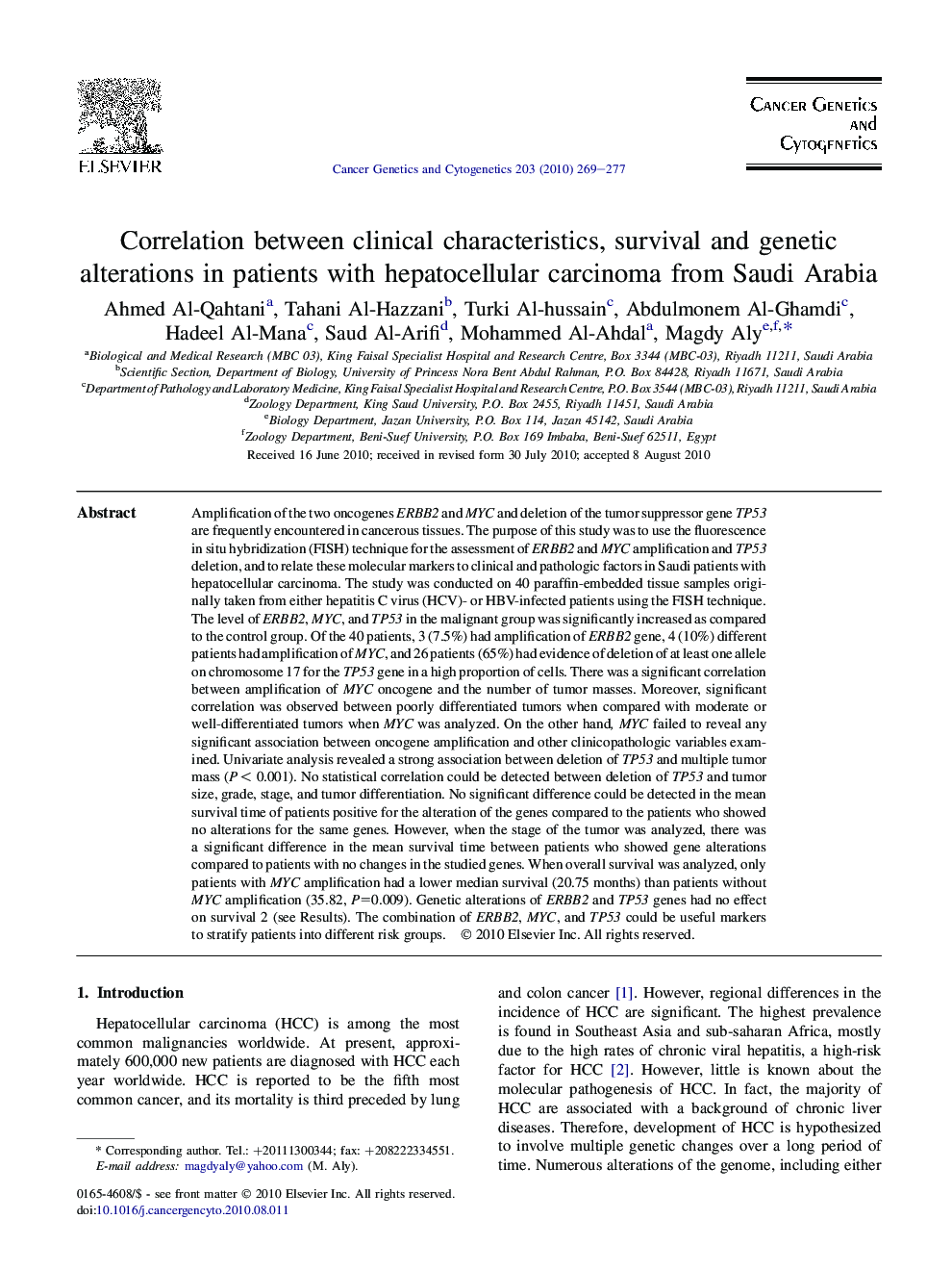| Article ID | Journal | Published Year | Pages | File Type |
|---|---|---|---|---|
| 2110566 | Cancer Genetics and Cytogenetics | 2010 | 9 Pages |
Amplification of the two oncogenes ERBB2 and MYC and deletion of the tumor suppressor gene TP53 are frequently encountered in cancerous tissues. The purpose of this study was to use the fluorescence in situ hybridization (FISH) technique for the assessment of ERBB2 and MYC amplification and TP53 deletion, and to relate these molecular markers to clinical and pathologic factors in Saudi patients with hepatocellular carcinoma. The study was conducted on 40 paraffin-embedded tissue samples originally taken from either hepatitis C virus (HCV)- or HBV-infected patients using the FISH technique. The level of ERBB2, MYC, and TP53 in the malignant group was significantly increased as compared to the control group. Of the 40 patients, 3 (7.5%) had amplification of ERBB2 gene, 4 (10%) different patients had amplification of MYC, and 26 patients (65%) had evidence of deletion of at least one allele on chromosome 17 for the TP53 gene in a high proportion of cells. There was a significant correlation between amplification of MYC oncogene and the number of tumor masses. Moreover, significant correlation was observed between poorly differentiated tumors when compared with moderate or well-differentiated tumors when MYC was analyzed. On the other hand, MYC failed to reveal any significant association between oncogene amplification and other clinicopathologic variables examined. Univariate analysis revealed a strong association between deletion of TP53 and multiple tumor mass (P< 0.001). No statistical correlation could be detected between deletion of TP53 and tumor size, grade, stage, and tumor differentiation. No significant difference could be detected in the mean survival time of patients positive for the alteration of the genes compared to the patients who showed no alterations for the same genes. However, when the stage of the tumor was analyzed, there was a significant difference in the mean survival time between patients who showed gene alterations compared to patients with no changes in the studied genes. When overall survival was analyzed, only patients with MYC amplification had a lower median survival (20.75 months) than patients without MYC amplification (35.82, P=0.009). Genetic alterations of ERBB2 and TP53 genes had no effect on survival 2 (see Results). The combination of ERBB2, MYC, and TP53 could be useful markers to stratify patients into different risk groups.
